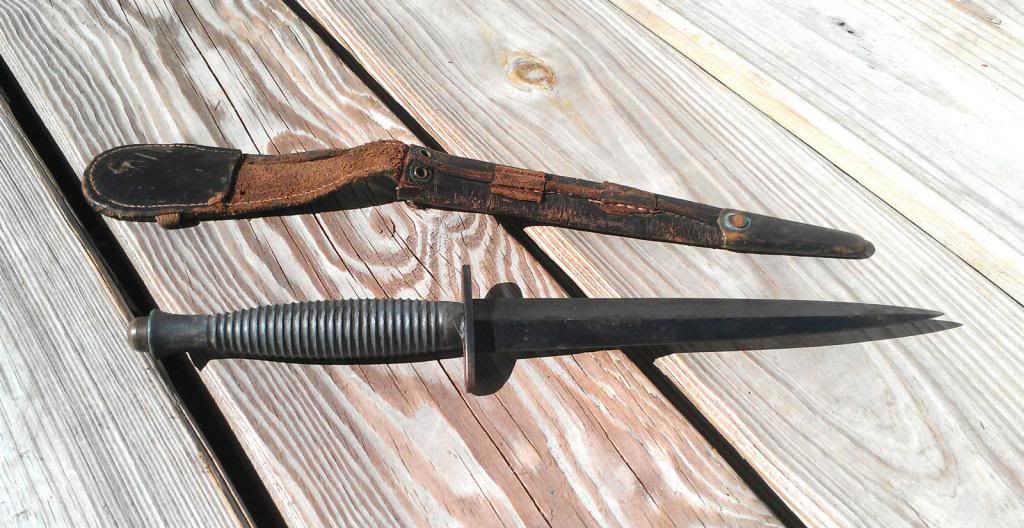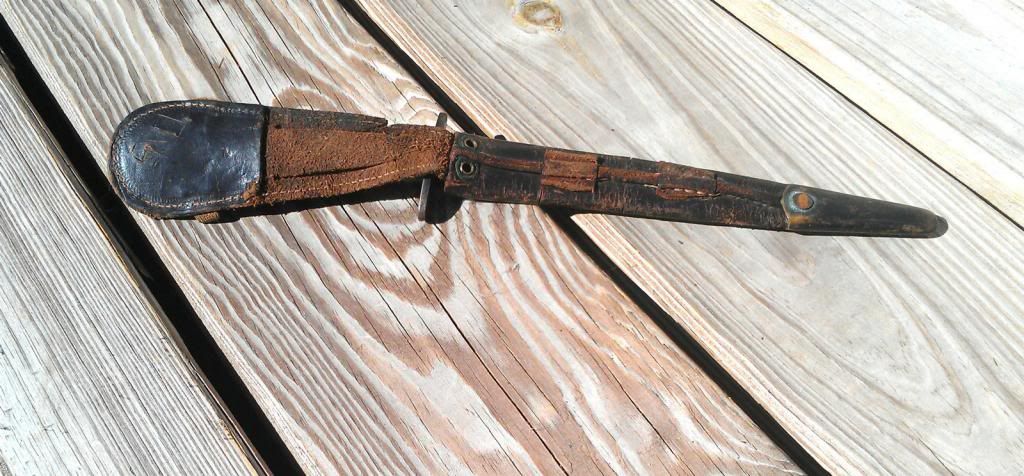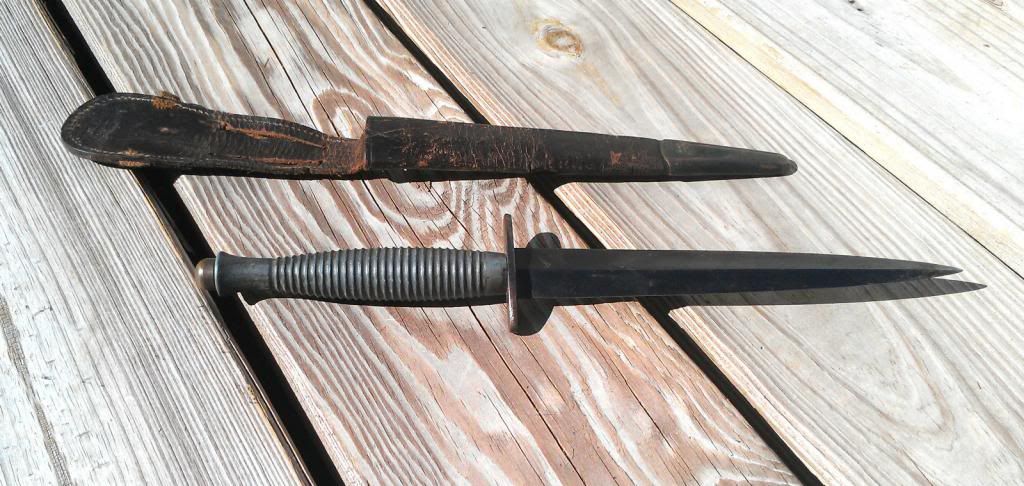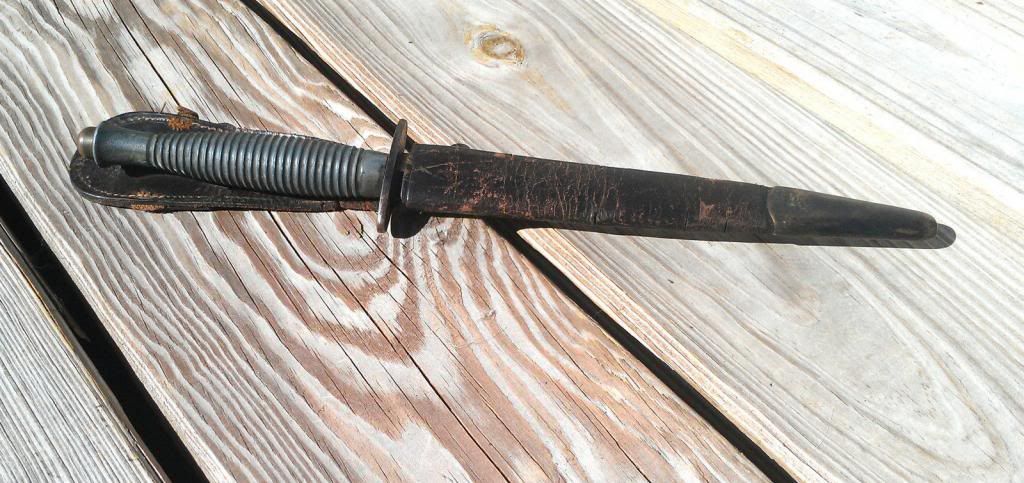Announcement
Collapse
No announcement yet.
Fairbairn Sykes commando knife for your review
Collapse
X
-
Tags: None
-
I assume you mean the seller says that it is WW2 vintage. These were developed in WW2 not WW1.Originally posted by luftwaffenkopf View Postseller says it's a WW1 vintage
I thought that any FS knife stamped England was a US import post war but I guess some war time versions would have been stamped on import post war. If the latter was the case then there would be a /|\ on it wouldn't there?
Looks nice though.Collecting NSDAP collar tabs
Kupuję medale i odznaki z Polskie sily Zbrojne Na Zachodzie 1939/47 - Polish Army in Exile badges
Seeking Soldbuch or any information relating to Dr. Werner Zwingelberg
Comment
-
re 3rd pattern commando dagger
Nice dagger looks post ww2 these are still used today, the 3rd pattern usually marked William Rodgers Sheffield England,I have just bought one 30 pounds, but need a sheath, the 3rd pattern used through ww2 by British commandos, some have 4 at top of the grip,some pheon marked,some b2 some called sterile totally unmarked.The ones we have could be ww2 Korea ,sas it's hard to tell without marks a book by "flook" is the bible seen these sell for 3rd pattern 250 pounds dealer price.Get a marked one b2 400 pounds it's an iconic knife, and special.keep it.regards.ianb
Comment
-
could be of a batch sold to u.s
This could be a surplus knife sold by the grits to USA about 24,000 we're sent but we're not all well made, the marines hadn't been taught the deadly moves it can inflict and said it didn,t block well, they wanted a chunky knife but make no mistake the letter opener as they called it in the hands of a trained killer is unbeatable.The SOE had the nicest version with a knurled diamond pattern aluminium handle.I like it its a nice piece of history, and arguably the deadliest hand to hand knife in the world.Are you selling it?ianb
Comment
-
What made these so deadly compared to other daggers ?? was it the way the Commando's were trained to use it that made it so ??Originally posted by zentsuji2 View PostThis could be a surplus knife sold by the grits to USA about 24,000 we're sent but we're not all well made, the marines hadn't been taught the deadly moves it can inflict and said it didn,t block well, they wanted a chunky knife but make no mistake the letter opener as they called it in the hands of a trained killer is unbeatable.The SOE had the nicest version with a knurled diamond pattern aluminium handle.I like it its a nice piece of history, and arguably the deadliest hand to hand knife in the world.Are you selling it?ianb
Comment
-
A while a go on one of the Pawn shows a guy brought several WW1 American daggers. And it was remarked by the "expert" they had review the daggers and he mentioned the fact of daggers that could penetrate the heavy wool greatcoats where the knife style daggers couldn't. One of the daggers had a 3 sided narrow dagger blade, which were banned by the Geneva Convention after the first world war
Comment
-
I've heard these stories about certain blade styles being banned by the Geneva Convention but I've gone through the convention and have not found anything that mentions this at all. As far as I'm concerned this is a myth. Some people also say that it's illegal to sharpen a bayonet because it's apparently banned by the convention as well. Funny how the Canadian army issues a bayonet with a sharpener built into the scabbard.... Not to mention that in my 22 years in the military not once was I advised not to sharpen my bayonet. I'm certain that if it was illegal we would have been informed. The use of weapons of war are covered by the Hague Conventions and I didn't find anything in there either.Last edited by Infanteer; 10-13-2013, 09:55 PM.
Comment
-
Yeah I also saw that, the blade was a WW1 US 3 sided triangle shape, trench knife it was described asOriginally posted by pzrwest View PostA while a go on one of the Pawn shows a guy brought several WW1 American daggers. And it was remarked by the "expert" they had review the daggers and he mentioned the fact of daggers that could penetrate the heavy wool greatcoats where the knife style daggers couldn't. One of the daggers had a 3 sided narrow dagger blade, which were banned by the Geneva Convention after the first world war
Comment
-
Individual weapons are not mentioned, but triangular and blades like the lebel bayonets are supposedly covered by "weapons should not cause unnecessary suffering or superfluous injury" as the injuries apparently cannot be treated like normal wounds. How true that is, i don't know.Originally posted by Infanteer View PostI've heard these stories about certain blade styles being banned by the Geneva Convention but I've gone through the convention and have not found anything that mentions this at all..
best
Chris
Comment
-
A wound made from a triangular blade is hard to stitch. A puckering of the would would result. A regular knife or bayonet wound the edges of the wound are parallel so stitching the wound edges together would be the same as an incised surgical cut, but with a triangular wound there are no parallel edges
Comment
Users Viewing this Thread
Collapse
There are currently 2 users online. 0 members and 2 guests.
Most users ever online was 10,032 at 08:13 PM on 09-28-2024.






Comment